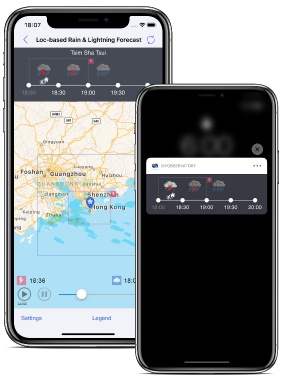Artificial Intelligence and Meteorology Related Services
Artificial Intelligence and Meteorology Related Services
HO Lok-ping
September 2020
With the maturity of artificial intelligence (AI) theory and technology, the efficiency of analysing big data has been greatly improved. How does the Observatory seize the opportunities of using AI?
The Observatory is committed to promoting the application of AI in weather forecasting and warning services to enhance the quality of weather services. In addition to the self-developed forecasting systems using AI techniques (Figure 1), the Observatory also gains synergy from cooperating with local university scholars to develop more advanced machine learning or deep learning algorithms. In particular, a novel deep learning model has been developed in SWIRLS nowcasting system as the results of such collaboration that demonstrates potential to improve the accuracy of rainfall nowcast in the next 1-2 hours. Intelligent Meteorological Monitoring Assistant handles big data and generates automatic advice to aid the forecasters in performing weather monitoring and forecasting duties.
The above two applications have been put into operation in the Observatory for some time. Meanwhile, the Observatory is applying AI in developing new meteorology related services, for example: (1) The Observatory staff making use of big data including aircraft distribution, air path location and severe convective weather to evaluate the air traffic flow rate at the airport,
which remains a big challenge for aviation meteorology; (2) Supervised learning for identifying atmospheric gravity waves from satellite imageries to determine whether the airflow may bring turbulence to aircraft; (3) Estimation of visibility, cloud amount and lightning locations from weather photos to facilitate quick appreciation of the surrounding weather conditions by the forecasters.
While the Observatory is developing AI technology, new channels are also being explored for sourcing more weather related data, including smart lampposts and crowdsourcing, to better support the development of AI applications.

Figure 1. Location-based rain and lightning nowcast by using object-tracking technology of AI available on “MyObservatory” App.